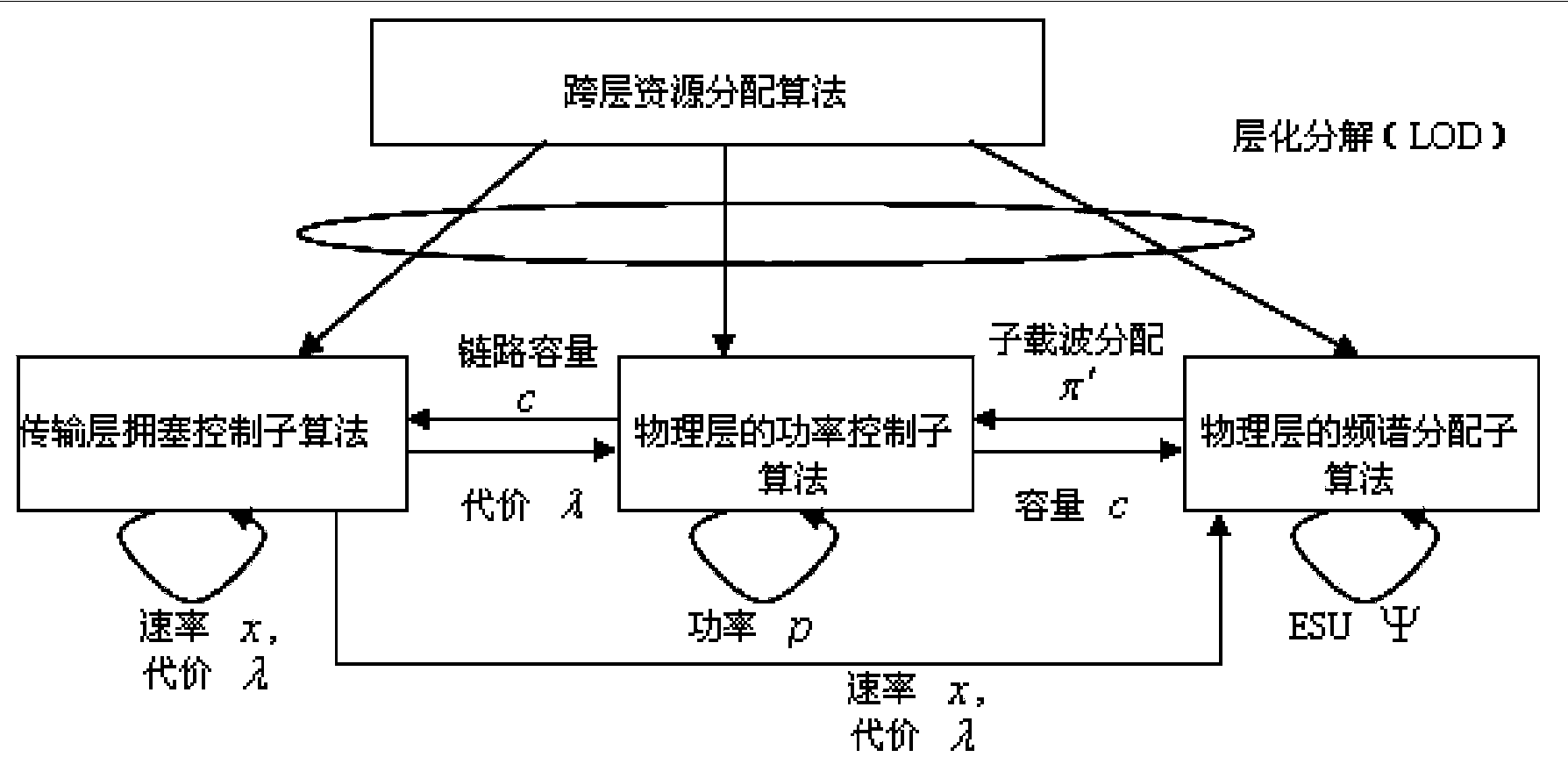Method for transmitting speeds, sending power and distributing frequency spectra in distributed collaboration mode
A distributed collaboration and transmission rate technology, applied in power management, network traffic/resource management, electrical components, etc., can solve problems such as inapplicable cognitive self-organizing networks
- Summary
- Abstract
- Description
- Claims
- Application Information
AI Technical Summary
Problems solved by technology
Method used
Image
Examples
Embodiment Construction
[0032] Such as figure 1 As shown in , a method of distributed cooperative transmission rate, transmission power and spectrum allocation, its theoretical principle is: regard elastic link capacity as a function of transmission power, build a joint optimization model of congestion control and power control, so as to maximize The network utilization with multiple optional subcarrier links, the joint optimization model is a non-convex and inseparable optimization problem, by introducing new variables and small perturbed quadratic terms, the original optimization problem can be transformed into Separable and dualizable problem, that is, the problem can be decomposed into a congestion control subproblem and a power control subproblem, the former is a primitive algorithm that generates congestion costs based on locally aggregated source rates; the latter is a dual algorithm, The algorithm updates the transmission power according to the congestion cost. The distributed cooperative al...
PUM
 Login to View More
Login to View More Abstract
Description
Claims
Application Information
 Login to View More
Login to View More - R&D
- Intellectual Property
- Life Sciences
- Materials
- Tech Scout
- Unparalleled Data Quality
- Higher Quality Content
- 60% Fewer Hallucinations
Browse by: Latest US Patents, China's latest patents, Technical Efficacy Thesaurus, Application Domain, Technology Topic, Popular Technical Reports.
© 2025 PatSnap. All rights reserved.Legal|Privacy policy|Modern Slavery Act Transparency Statement|Sitemap|About US| Contact US: help@patsnap.com



